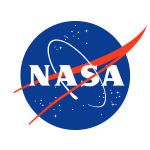Small Business Innovation Research/Small Business Tech Transfer
Framework for Autonomous Optimization
Project Description

Phoenix Integration and MIT propose to create a novel autonomous optimization tool and application programming interface (API). The API will demonstrate the ability to link to many optimization algorithms, both open source and proprietary, as well as to framework tools that carry optimization algorithms within them. It will also allow users to connect their engineering models to it conveniently. The API will be available both as a cross-platform standalone product and as part of ModelCenter, an engineering integration and trade study environment. In addition to and included within the API will be techniques to perform optimization autonomously by providing a management layer which globally adjusts the run in an intelligent fashion. Thus, it will categorize problems to understand effective solution techniques for them, try many algorithms during a run, change the settings on single algorithms so they run more productively, adaptively learn which techniques worked and which didn't, and inquire of the user insight that may help the optimizer reach its destination sooner. A database of prior runs will be built to help facilitate these features. The management layer will also help the user understand errors that take place, log appropriately, and prevent failures.
More »
Anticipated Benefits
A major benefit of the proposed software toolset is that it can be applied at the conceptual, preliminary, and detailed design stages for complex projects across the entire spectrum of NASA Science, Human Exploration and Operation, and Aeronautics Research Mission Directorates. The proposed technology will provide a step change in the usability and flexibility of optimization software. It is likely that these improvements will be most significant early in the design process where impacts on lifecycle costs are the greatest. Initial applications will be in the Science mission area dealing with advanced satellites, telescope systems, or robotic exploration. Additional applications will be pursued within the NASA directorates as case studies and models are developed. NASA's Fundamental Aeronautics program has been a strong user of Phoenix technology and would benefit from the development work advocated here. JPL is heavily investing in MBSE technology (e.g. through DARPA's F6 program) and is a strong candidate for the optimization deliverables described here. In general, satellite programs, space transportation, and air vehicle technologies can benefit from this generic technology. Government agencies that partner with NASA on joint programs such as DOE, NSF, and FAA would be natural extensions for commercialization. In addition, prime NASA contractors in support of the ISS such as Boeing, Space X, Orbital Sciences, and Sierra Nevada are strong possibilities.
Beyond NASA, Phoenix Integration's commercialization efforts will be focused primarily on the aerospace and defense sector where companies such as Lockheed Martin are already actively using the ModelCenter technology discussed in this proposal. Phoenix Integration is well positioned to introduce this technology to leading organizations in this business sector such as BAE, Boeing, Lockheed Martin, Northrop Grumman, Pratt and Whitney, and Raytheon since they already utilize the company's products. Phoenix Integration software tools are widely used by domain level engineers to analyze, design, and optimize the subsystems, components, and processes that make up complex aerospace systems. By leveraging this existing installed base, it will be possible to quickly achieve initial sales and establish a core user base for the new technology. After establishing penetration in aerospace and defense, Phoenix Integration will build upon these successes to pursue secondary markets such as automotive, heavy equipment, green energy, shipbuilding, transportation, and process industries. Some of these industries have begun using Phoenix products and optimization tools in general. The growing market and interest in this technology has been robust and bodes well for future development. More »
Beyond NASA, Phoenix Integration's commercialization efforts will be focused primarily on the aerospace and defense sector where companies such as Lockheed Martin are already actively using the ModelCenter technology discussed in this proposal. Phoenix Integration is well positioned to introduce this technology to leading organizations in this business sector such as BAE, Boeing, Lockheed Martin, Northrop Grumman, Pratt and Whitney, and Raytheon since they already utilize the company's products. Phoenix Integration software tools are widely used by domain level engineers to analyze, design, and optimize the subsystems, components, and processes that make up complex aerospace systems. By leveraging this existing installed base, it will be possible to quickly achieve initial sales and establish a core user base for the new technology. After establishing penetration in aerospace and defense, Phoenix Integration will build upon these successes to pursue secondary markets such as automotive, heavy equipment, green energy, shipbuilding, transportation, and process industries. Some of these industries have begun using Phoenix products and optimization tools in general. The growing market and interest in this technology has been robust and bodes well for future development. More »
Project Library
Primary U.S. Work Locations and Key Partners
| Organizations Performing Work | Role | Type | Location |
|---|---|---|---|
| Phoenix Integration | Lead Organization | Industry | Blacksburg, Virginia |
| Jet Propulsion Laboratory (JPL) | Supporting Organization | FFRDC/UARC | Pasadena, California |
| Massachusetts Institute of Technology (MIT) | Supporting Organization | Academia | Cambridge, Massachusetts |
Primary U.S. Work Locations
-
California
-
Massachusetts
-
Virginia

Suggest an Edit
Recommend changes and additions to this project record.

